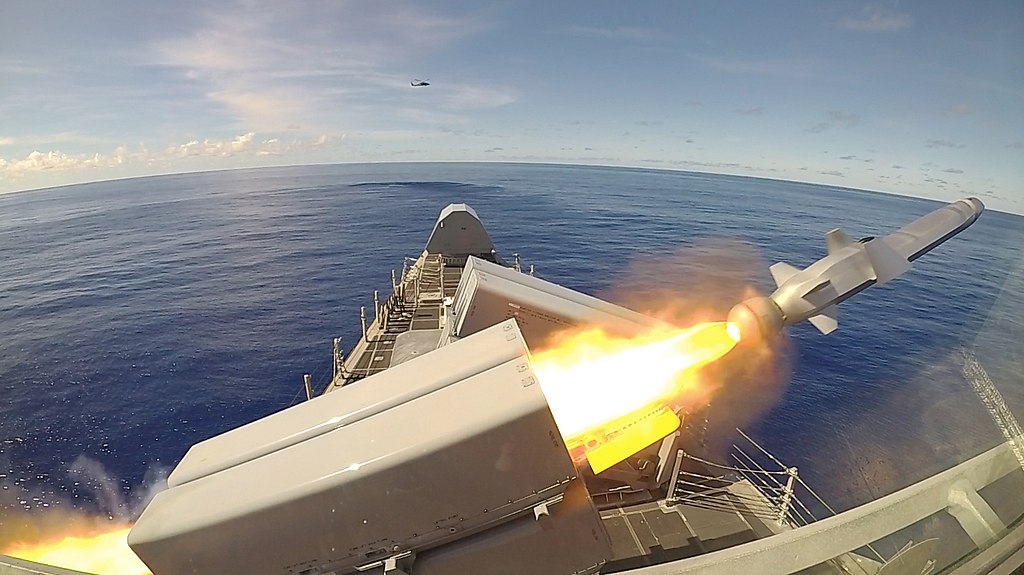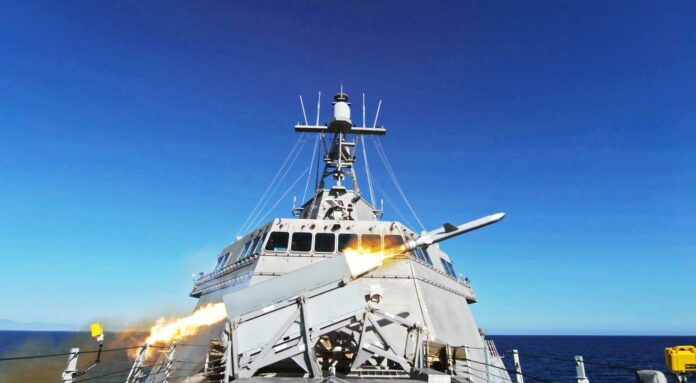The Independence-variant littoral combat ship USS Gabrielle Giffords (LCS 10) successfully launched the Naval Strike Missile (NSM) as part of shipboard operational testing and evaluation, March 19, the U.S. Navy Pacific Fleet announced via dvidshub.net.
“The recent missile launches were a great accomplishment for Gabrielle Giffords and the LCS community,” said Cmdr. Michael Piano, commanding officer of Gabrielle Giffords’ Blue Crew. “I am especially proud of Gabrielle Giffords Blue and grateful for Surface Division Eleven’s support to score this win for our Navy.”
The successful missile shoot demonstrates value for long-range anti-ship cruise missiles aboard LCS.
“It was an honor to successfully demonstrate our platform’s over-the-horizon lethality and I look forward to the capabilities NSM provides to the fleet,” said Chief Fire Controlman Jason Kloes, lead NSM operator of Gabrielle Giffords’ Blue Crew.
Naval Strike Missile:
Developed by the Norwegian company Kongsberg Defence & Aerospace, the Naval Strike Missile is a long-range anti-ship and land-attack missile that flies at sea-skimming altitude, has terrain-following capability and uses an advanced seeker for precise targeting.
The state-of-the-art design and use of composite materials are meant to give the Naval Strike Missile sophisticated stealth capabilities. The missile will weigh slightly more than 400 kg (880 lb) and have a range of more than 185 km (100 nm). NSM is designed for littoral waters (“brown water”) as well as for open sea (“green and blue water”) scenarios. The usage of a high-strength titanium alloy blast/fragmentation warhead from TDW is in line with the modern lightweight design and features insensitive high-explosive. Warhead initiation is by a void-sensing Programmable Intelligent Multi-Purpose Fuze designed to optimize effect against hard targets.

The target selection technology provides NSM with a capacity for independent detection, recognition, and discrimination of targets at sea or on the coast. This is possible by the combination of an imaging infrared (IIR) seeker and an onboard target database. NSM is able to navigate by GPS, inertial, and terrain reference systems.
After being launched into the air by a solid rocket booster which is jettisoned upon burning out, the missile is propelled to its target in high subsonic speed by a turbojet sustainer engine—leaving the 125 kg multi-purpose blast/fragmentation warhead to do its work, which in case of a ship target means impacting the ship at or near the water line.



